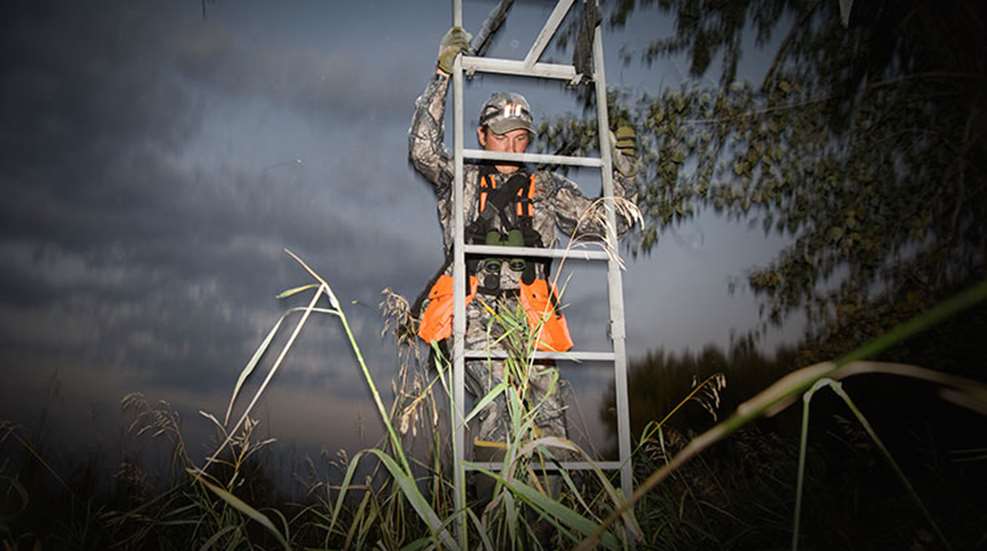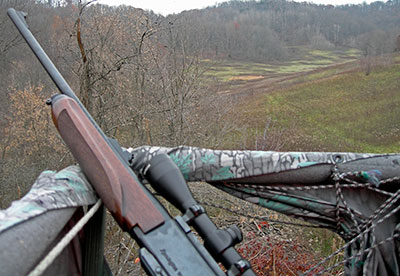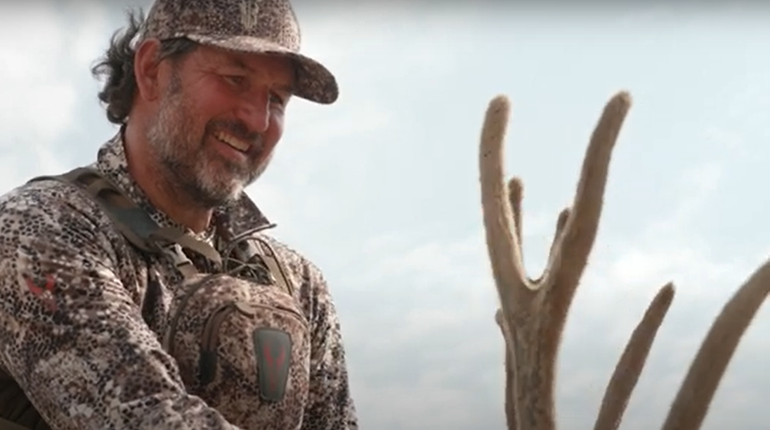
How often can you hunt a stand before deer avoid it like teenagers dodging chaperons at high school proms?
That’s not a fair question. Preventing deer-stand burnout isn’t as simple as counting the number of hunts from each stand, and then moving the stand or sitting elsewhere once you reach a “visitation quota.”
The fact is, some stands probably burn out the moment you hang them, while others keep producing much of the hunting season, year after year. How long they stay productive varies by wind, habitat, backgrounds, air-temperature variation and, most importantly, how well hunters gauge those factors when deciding where and when to hunt.
Make no mistake, though: A treestand, ground blind or tower stand starts losing its mojo when deer sense danger when near it. Sometimes those fears are site-specific, with deer avoiding a small area after realizing it’s used regularly by humans. In other cases, nearly every stand in the woods can go cold simply because deer realize gun season opened and it’s time to retreat into dense cover.
Research Confirms Beliefs
Hunters have long believed it’s possible to hunt stands too much and at the wrong times, of course, but recent research at Auburn University in Alabama and Penn State University is defining and illuminating just how quickly deer alter their behavior to stay alive. Researchers obtain those insights by attaching sophisticated GPS collars to deer and then watching how their whereabouts change throughout autumn.
Clint McCoy, a deer biologist with the Ohio Department of Natural Resources, conducted an extensive deer-monitoring study in South Carolina while working on his doctorate at Auburn University from 2009-2011. During that three-year study, his team captured 40 bucks and fitted them with GPS collars, 37 of which produced usable data on the bucks’ movements. McCoy’s collared bucks included eight yearlings (1½ years old), 10 that were 2½-year-olds, nine 3½-year-olds, and 10 that were 4½ or older.
To assess how the bucks avoided deer stands, McCoy created “harvest zones” for the nearly 100 stand sites on the 6,400-acre forest. These zones covered the area around each stand where hunters could see and shoot a deer. Bucks were considered to be in a kill zone only if they entered it during daylight.
With the collars giving each buck’s location every half-hour from Aug. 24 through Nov. 22 (deer season runs from mid-August to Jan. 1 in the study area), McCoy identified over 116,000 locations from the 37 bucks. After analyzing all those locations, McCoy found that bucks were four times as likely to enter a kill zone early in the season compared to late in the season. Also, no matter their age, all bucks responded similarly to hunting pressure.
Further, though the bucks used food plots more often as the season progressed, plots accounted for 8 percent of all early-season locations vs. 12 percent later in the season. Bucks usually waited until after dark to eat in the open. They averaged three daytime visits from late August to early September, but by mid-November each fall, 19 of 20 food-plot visits were after dark. Though baiting is legal in this area, bait sites proved even less attractive than food plots as the season progressed. As bucks increasingly visited food plots after Oct. 1, their visits to bait sites declined later in the season, especially during daylight.
 Hunters’ Activities Affect Bucks
Hunters’ Activities Affect Bucks
Meanwhile, McCoy’s research team also tracked when, where and how long hunters were in their stands. The hunters varied evenly in hunting experience and were always taken to their stands by ATVs so that after being dropped off they only had to take short walks. Once hunting began, McCoy detected almost immediate changes in the bucks’ movements: If a stand was hunted 12 hours during the previous week, the bucks were twice as likely to avoid the stand’s kill zone—no matter their age.
To determine how quickly bucks resume normal travel around unoccupied stands, McCoy examined the bucks’ locations one, two, three, four, five and six (or more) days after a stand was last hunted. On average, bucks avoided the stand until three days after it was hunted, and by the fourth and fifth days they didn’t seem to avoid it. Still, they were no longer as attracted to the site.
McCoy said his findings reinforce the need for hunters to avoid routines, and to pick stands based on wind direction—not convenience. “It’s easy to think you’ll see that buck at some point if you stick to one stand, but our research suggests the opposite,” he said. “Our data show that the more you hunt a stand, the less likely deer will pass within range.”
Meanwhile, roughly 700 miles to the north, Penn State researchers in 2013 began a five-year GPS-collar study of deer movements including bucks that survived at least two hunting seasons. That’s no small feat in a state with about 700,000 gun-hunters and 266,000 bowhunters. The researchers pinpoint the bucks’ locations every three hours during the state’s seven-week archery season and every 20 minutes during its two-week gun season.
Professor Duane Diefenbach, who leads Pennsylvania’s Cooperative Fish and Wildlife Research Unit, reports that deer don’t appear affected by archery season, though once hunters enter the woods the day before the firearm season to scout and prepare stands, deer almost immediately go to places they weren’t seen the previous 10 months. Then, once gun season ends, they revert to their normal routines.
The Pennsylvania study involves 40 collared deer of both sexes, and Diefenbach reports bucks with even one hunting season of experience move to remote spots that hunters struggle to reach undetected. On the study’s webpage, Diefenbach wrote that these bucks find vantage points above a steep slope that they can monitor with their eyes and ears as prevailing winds carry scents from the cover behind them.
In one case, a buck moved deeper into the woods while gaining 400 feet in elevation once hunting season began, which put it 1,000 yards from the nearest road. Typically, bucks found thick cover where few hunters lug a stand. Diefenbach discounted the “going nocturnal” explanation, saying deer simply go where they’re more susceptible to drives than stands during daylight, and typically walk circles around hunters operating alone.
Whatever the deer’s evasion tactics, they appear to be working. During the study’s first year, hunters killed about 10 percent of the collared does and 25 percent of the collared bucks.
Achieve Consistent Success
Hunters who consistently join the successful minority understand that stand burnout is affected by how they reach a stand, hunt the stand and leave the stand. “I think most people focus mostly on their time in the stand and disregard their approach and exit,” said deer biologist Grant Woods of “Growing Deer TV” and owner/operator of The Proving Grounds in southwestern Missouri. “If you’re hunting a pinch point and the wind is carrying your scent over a lake, you can probably hunt that spot as often as the wind cooperates—if you approach it and exit it intelligently. You have to be alert at all times as to where the wind blows your scent. You can’t let the wind tip off deer when you’re entering or leaving your stand.”
Woods said we’ll probably never know the whitetail’s memory abilities with certainty, or whether it can remember dangerous encounters for three weeks, three months or three years—or longer. Whatever their memory skills might be, Woods thinks mature deer either have a better memory than young deer, or they’re better able to associate danger with certain locations where their nose, eyes and ears aren’t much help.
In other words, if a mature deer enters a site that’s the equivalent of a dark alley at 2 a.m., it will probably go on high alert and find an alternative. “A stand that favors the hunter 100 percent is not a great stand,” Woods said. “Mature bucks will not go where the odds are totally against them, unless maybe when chasing a doe and she leads him through one of those spots.”
Instead, Woods prefers stands where he can hunt winds that carry his scent just beyond the reach of where deer will likely pass. “I call these 45-degree angle stands,” he said. “I like to be just on the edge of being busted by thermals or the wind. I think deer are more comfortable in those places. It’s not a 180-degree angle to the wind, and maybe not even 90 degrees. You want to be where a buck feels protected. I keep logs on every buck I kill, including the wind, weather and other conditions. Those 45-degree angle setups are my best sites. It’s better to be a bit on the risky side than the totally safe side. When it’s a no-brainer that I won’t get busted someplace, there’s no way a buck will stick his nose in there.”
Woods also suggests trying a riskier approach during the rut, when bucks are moving more in daylight and sometimes pushing through bedding areas like beagles on bunnies as they search for receptive does.
Know When to Take Risks
“I’ll take more risks during the rut because that’s the only time I’m going to hunt that bedding area or thick sanctuary,” Woods said. “I’ll risk blowing a stand for that one good hunt during the rut.”
McCoy suggests a similar approach when bucks stop feeding in fields or openings during daylight. He recalls monitoring a 4½-year-old buck that regularly ate in a beanfield, but it never arrived before 9 p.m. during the hunting season. Plus, it always returned to its bedding area about three-quarters of a mile away before dawn.
“Sometimes you have to squeeze them a bit if you ever hope to shoot one,” McCoy said. “This buck was typically up and moving about 30 minutes before the end of shooting light. That’s a small window of opportunity for hunters, but they’ll have to tighten their grip by hunting closer to its preferred bedding area.”
Woods thinks one of the best risk-rewards setups is a creek bottom, but you must be careful when to hunt it. “Even though everyone tells you not to hunt creek bottoms because of swirling winds, they can be good when the temperature drops and the thermals blow predictably,” he said. “But it’s a short hunt. It only works for about an hour to 90 minutes till the sun pops up and warms the valley. If you insist on hunting from daylight to 10 a.m. no matter what, don’t go there. But if you have the discipline to bail out by 8 a.m., and hunt somewhere else the rest of the morning, you can hunt creek bottoms that weren’t previously hunted.
With all that being said, Woods and McCoy note that sometimes deer face conditions that force them to take risks, too. For instance, if a region is drought-stricken, and food and water are in tight supply, deer might visit the same food source regularly, even in daylight.
“If you look at the research, it’s rare in most places for a buck to die right at a feeder or bait pile,” Woods said. “When they do, it’s usually because there’s no other food around. They have little choice but to eat there. Either that or it wasn’t hunted at all till that point.”
Tom Indrebo, owner of Bluff Country Outfitters in Wisconsin’s Buffalo County, believes woodland ponds can be a similar Achilles’ heel during prolonged hot, dry, windy periods or when bucks are running ragged during the rut.
“When our waterhole action heats up, I often can’t keep bowhunters off those stands during heat waves in September, October or November,” Indrebo said. “My clients often insist on returning day after day, and I don’t discourage them because our results show it’s not a problem. During one stretch from 1998 through 2005, we killed a dozen Pope and Young bucks off the same stand, missed several more, and passed up countless smaller bucks.”
■■■
Obviously, deer-stand burnout can vary, and special situations defy the norm, but most stand sites can be swiftly ruined if you bungle your approach, hunt and/or exit.
“Deer hunting would be a whole lot easier if we could just say you can hunt every stand one, three or five times before you alert them, but it’s never that cut and dried,” Woods said. “If you pay attention, you’ll never stop learning. Every situation is different. About the only thing certain about my stand sites is that they’re rarely where I find the most deer sign. If you find tons of tracks and scat, a site is probably a bedding or feeding area the deer only use at night. In that case, I hunt where they’re heading to those spots or leaving those spots.”





































